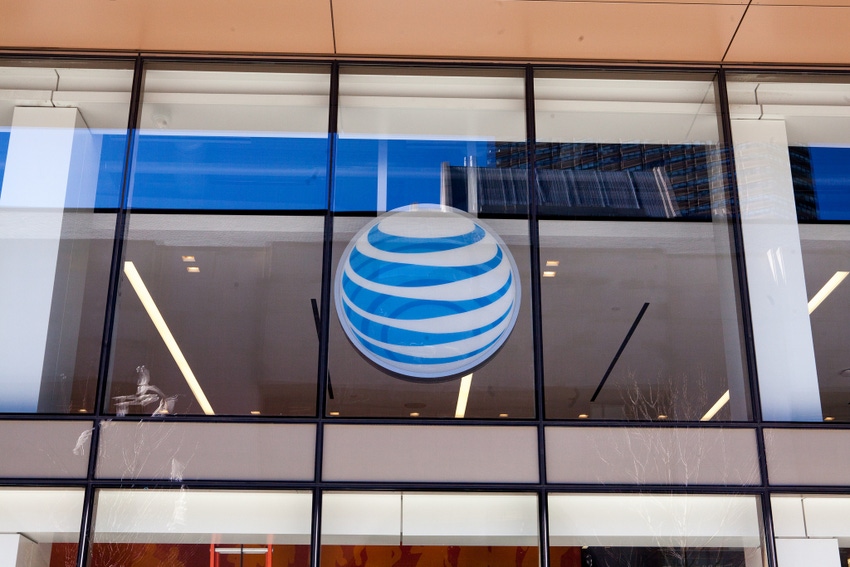AT&T has given an update on its progress with developing a 5G network, saying Nokia has joined ongoing lab trials while field trials are expected this summer.
June 6, 2016

AT&T has given an update on its progress with developing a 5G network, saying Nokia has joined ongoing lab trials while field trials are expected this summer.
Primarily, Nokia will be focussing on assisting AT&T with the spectral efficiency elements of 5G design, and has been drafted in to help develop millimetre wave solutions, which has been commonly identified as one of the biggest hurdles in deploying high speed, high capacity and far-reaching radio coverage for 5G.
“Nokia is joining to help us test millimetre wave which we expect to play a key role in 5G development and deployment,” said Tom Keathley, SVP of wireless network architecture and design for AT&T. “The work coming out of AT&T Labs will pave the way toward future international 5G standards and allow us to deliver these fast 5G speeds and network performance across the U.S.”
AT&T says its lab trials have already demonstrated the possibility of hitting 10 Gbps on mobile, working with Ericsson, and that it has high hopes for outdoor 5G wireless connectivity trials in fixed locations this summer. While not exactly forthcoming on what the trials are aiming to achieve at this stage, AT&T did say trials will be taking place in Texas and New Jersey, and in all likelihood will be a direct continuation of conditions already tested in the lab to date.
So far, the telco has been looking to simulate real-world conditions the 5G network will likely come up against; so it has replicated peak and strenuous conditions in the lab such as accommodating crowds at concerts or football games – something Sprint has been trialling in stadia at the Copa America soccer tournament this month.
AT&T says the reproduction of network conditions gives it more insight into the progress being made, and puts some form of benchmark against signal performance, reliability, range and coverage.
At the heart of its 5G lab trials, and indeed its strategic roadmap in general, is a cloud-based architecture for both radio and core networks. Its Domain 2.0 strategy has been discussed publically on many occasions, most recently with CTO John Donovan giving a pre-Mobile World Congress heads-up on what is still to come this year. Back in February, Donovan said AT&T will be leaning heavily on cloud-enabled solutions and services to make the leap to a real next-generation infrastructure; such as SDN, NFV and big data. The plan is for these three core pillars to form the basis of an agile, automated, intelligent and efficient network capable of scaling to the data-heavy requirements of a 5G network.
Speaking to Telecoms.com recently, AT&T’s VP of Mobile Core and Network Services, Paul Greendyk explained how cloud is such a major part of its evolution strategy.
“The typical 2G, 3G or 4G were all about feeds and speeds: bigger, fatter and denser,” he said. “But for 5G there’s a whole different dimension of 5G densification that is really being brought about by sensor networks and IoT, and that flattens out 5G so that there’s both fat pipes for speeds and feeds, but also thin pipes for the many millions and billions of sensors.
“AT&T is very busy building its own cloud to cater for this flexibility required; we’ve built a bunch of different network functions to virtualize and want to virtualize up to 30% of the network this year, and a fair chunk of that is going to be done in the mobile core. It’s more an evolution towards 5G, and the virtualization of the core. Using SDN and NFV is a necessary ingredient for 5G, and in fact it will be a part of the standards definition. We’re already very busy with this, because it lays the foundation for what we need to be able to do with 5G.”
But AT&T isn’t necessarily jumping the gun and committing to any one technology before standards emerge. Any conclusive decision on a definitive standard for 5G isn’t expected from the 3GPP for at least another two years, by which time dramatic advances in radio and core technology is perfectly feasible. In an attempt to avoid making its own tests in 2016 redundant by the time standards emerge, AT&T says all of its tests have been designed to be amenable and adjustable to comply with regulation and standards released in the future.
“We’re structuring our 5G trials in such a way that we’re able to contribute to the international 5G standards development and pivot to compliant commercial deployments once standards are set by 3GPP,” the operator said in a statement.
About the Author(s)
You May Also Like








.png?width=300&auto=webp&quality=80&disable=upscale)


_1.jpg?width=300&auto=webp&quality=80&disable=upscale)


.png?width=800&auto=webp&quality=80&disable=upscale)